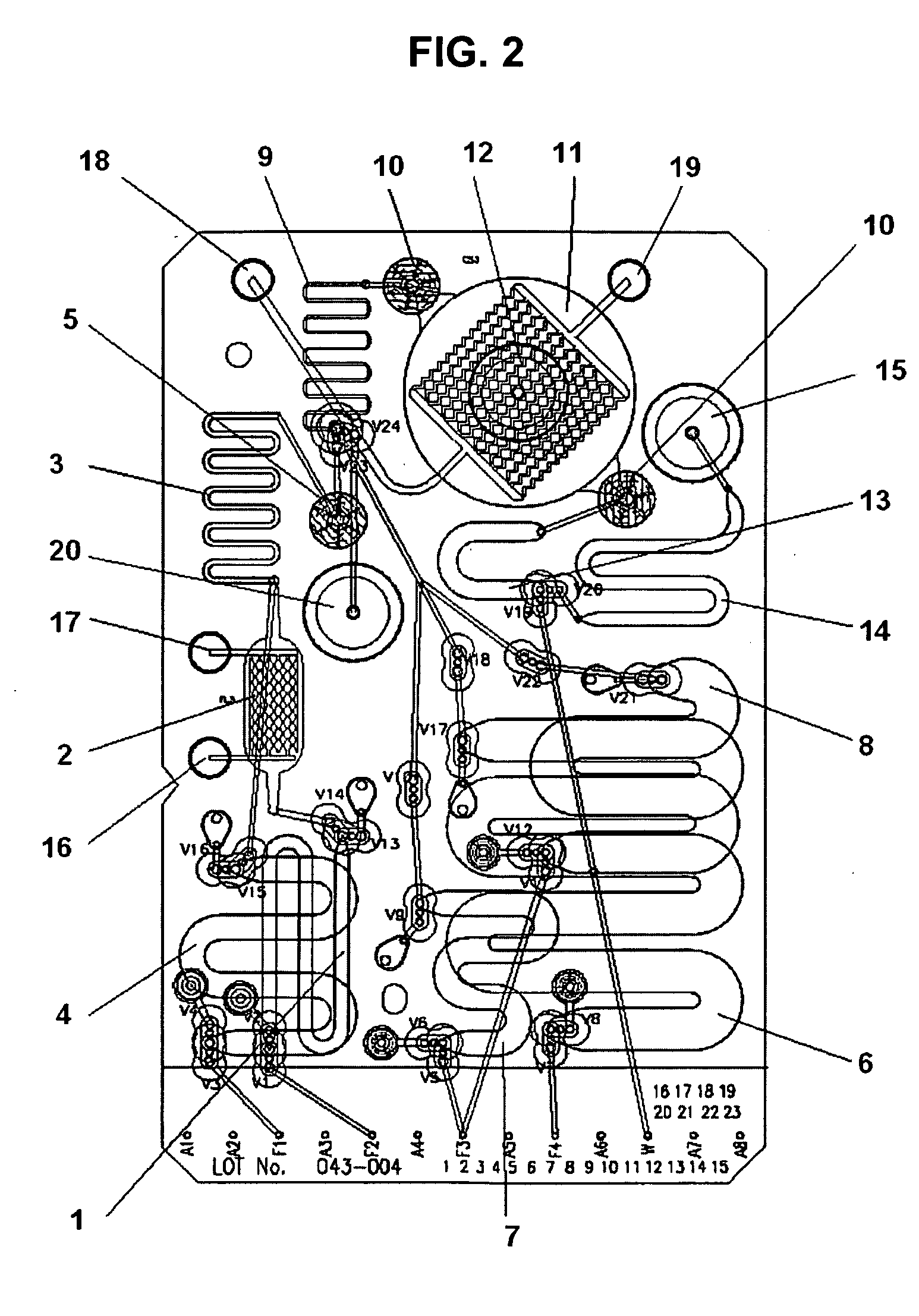Microfluidic Biological Extraction Chip
- Summary
- Abstract
- Description
- Claims
- Application Information
AI Technical Summary
Benefits of technology
Problems solved by technology
Method used
Image
Examples
Embodiment Construction
[0023]FIG. 1 illustrates the layout of a first embodiment of a microfluidic extraction cartridge. The cartridge is configured for the extraction of nucleic acids from cells or cell lysate but other embodiments may be configured for the extraction of protein, protein fractions, or other cellular contents by altering the binding properties of the beads used for molecular capture. Additionally, the lysis chambers may be configured and operated to disrupt other sources of DNA or RNA such as viruses or bacterial or fungal spores. Table 1 lists the structural elements identified in FIG. 1.
TABLE 11Sample Loop2Electric Field Lysis Chamber3Chemical Lysis Chamber4Chemical Lysis Reagent Loop5Lysate Filter Membrane6Wash Buffer Loop7Nuclease Solution Loop8Elution Buffer Loop9Contacting Loops10Bead Containment Membranes11Capture Chamber12Bead Injection Port13Buffer Chamber14Product Storage ChamberP1Pump 1P2Pump 2P3Pump 3P4Pump 4
[0024]Sample Loop 1 may be loaded with cells, spores, virions or othe...
PUM
| Property | Measurement | Unit |
|---|---|---|
| Pressure | aaaaa | aaaaa |
| Shape | aaaaa | aaaaa |
| Electric properties | aaaaa | aaaaa |
Abstract
Description
Claims
Application Information
 Login to View More
Login to View More - R&D
- Intellectual Property
- Life Sciences
- Materials
- Tech Scout
- Unparalleled Data Quality
- Higher Quality Content
- 60% Fewer Hallucinations
Browse by: Latest US Patents, China's latest patents, Technical Efficacy Thesaurus, Application Domain, Technology Topic, Popular Technical Reports.
© 2025 PatSnap. All rights reserved.Legal|Privacy policy|Modern Slavery Act Transparency Statement|Sitemap|About US| Contact US: help@patsnap.com



